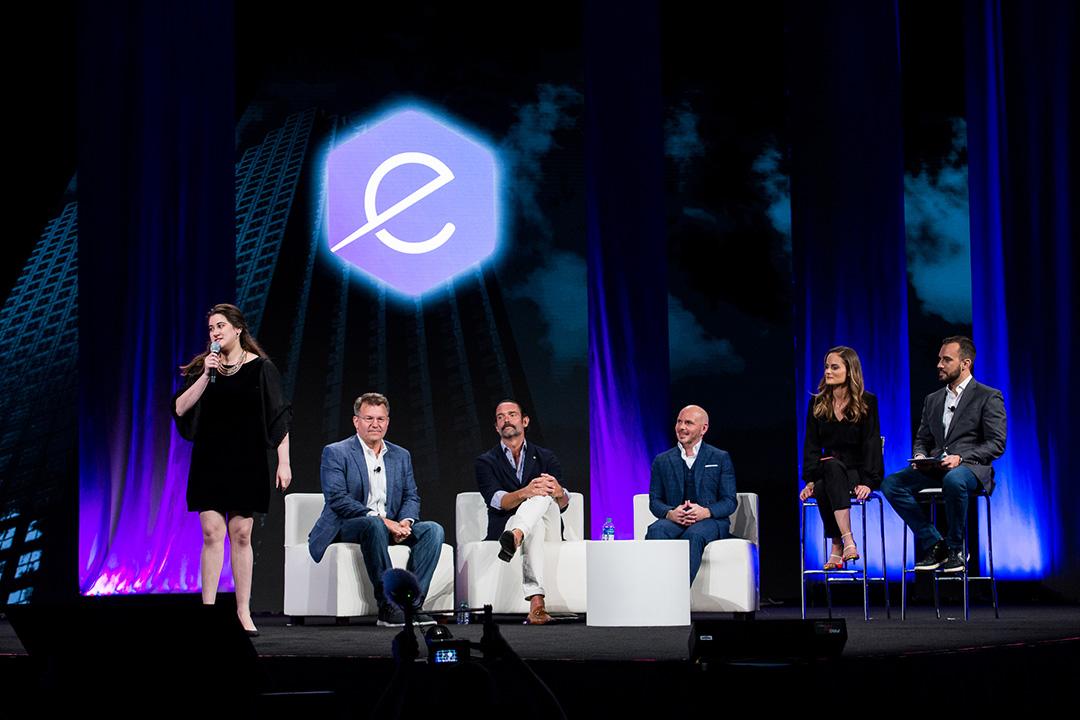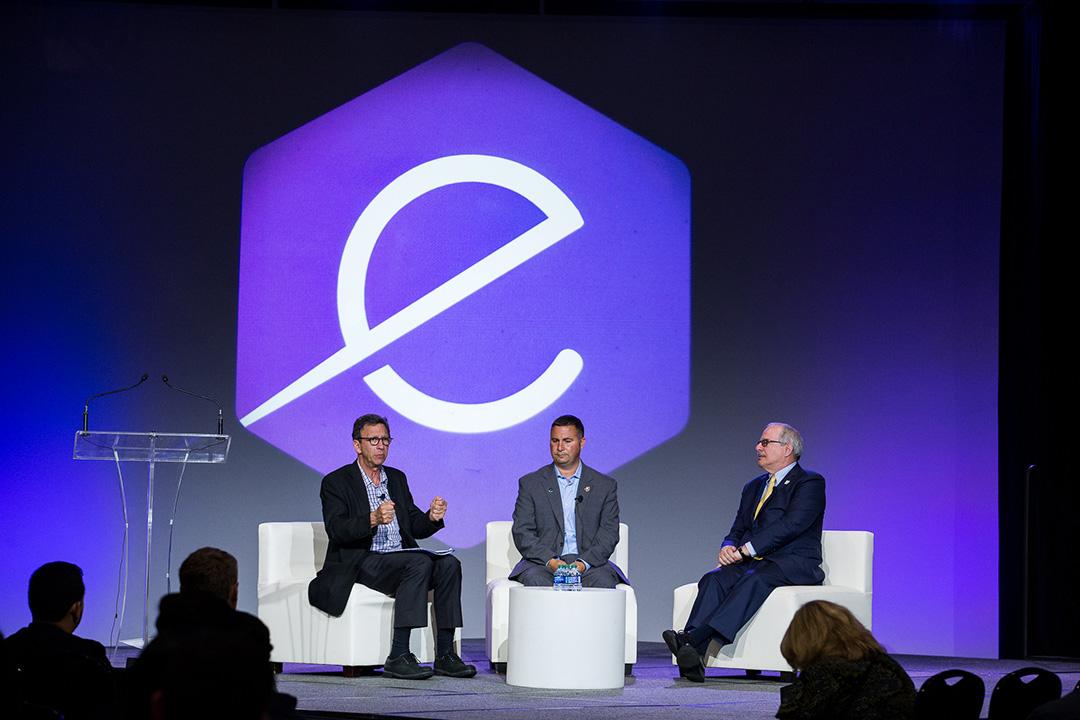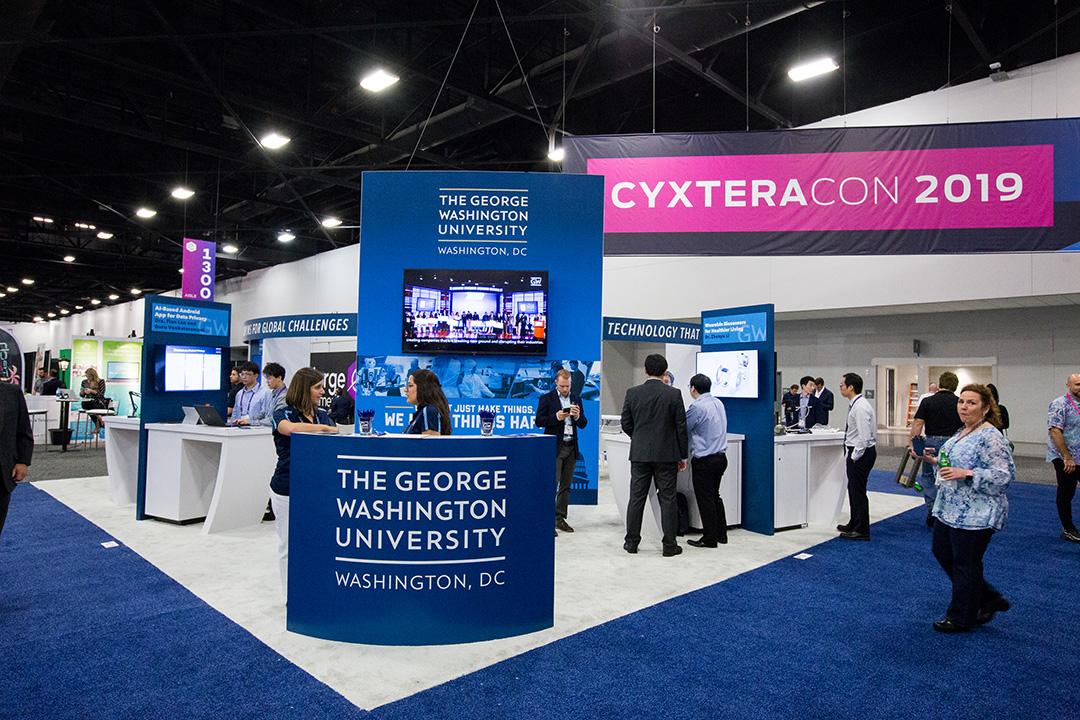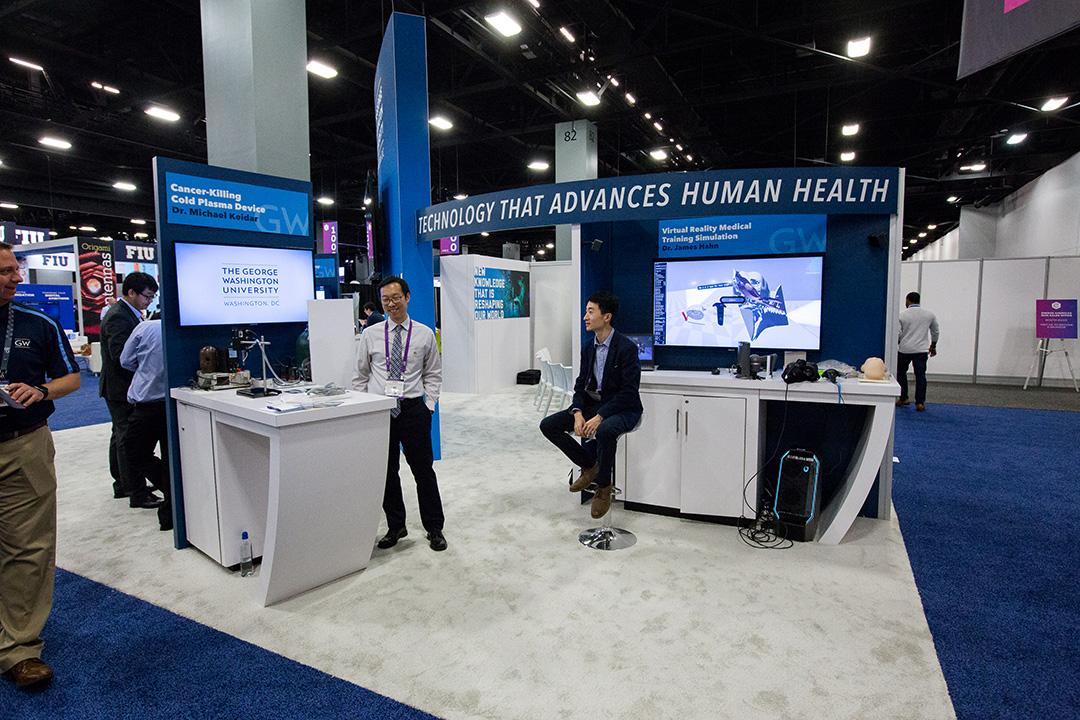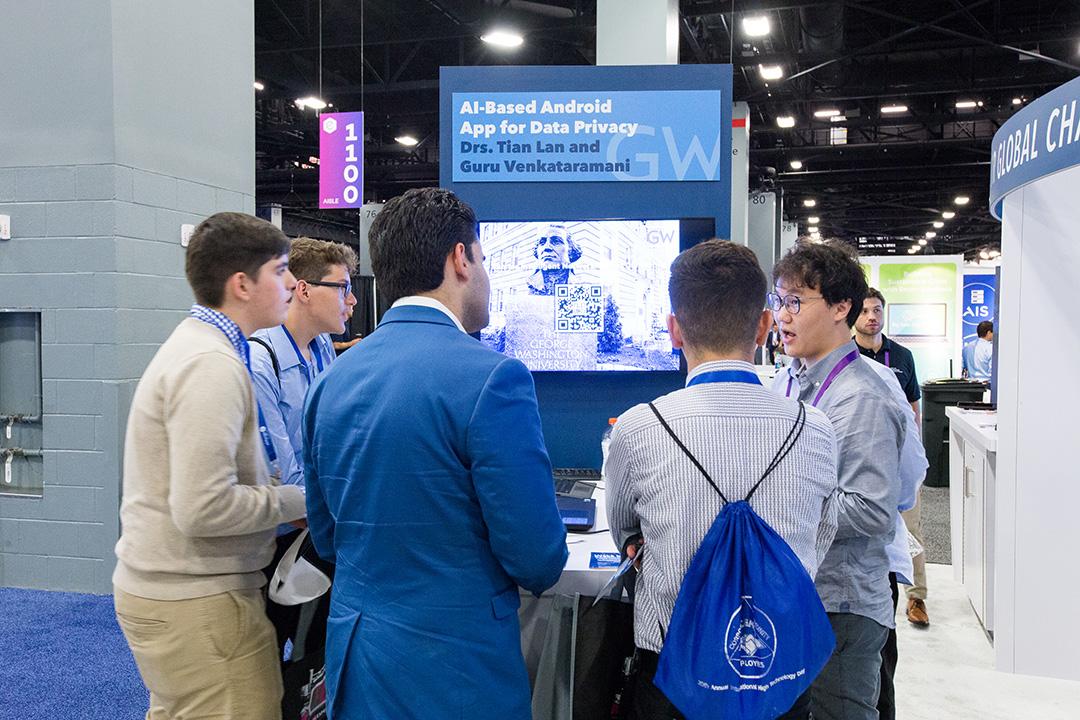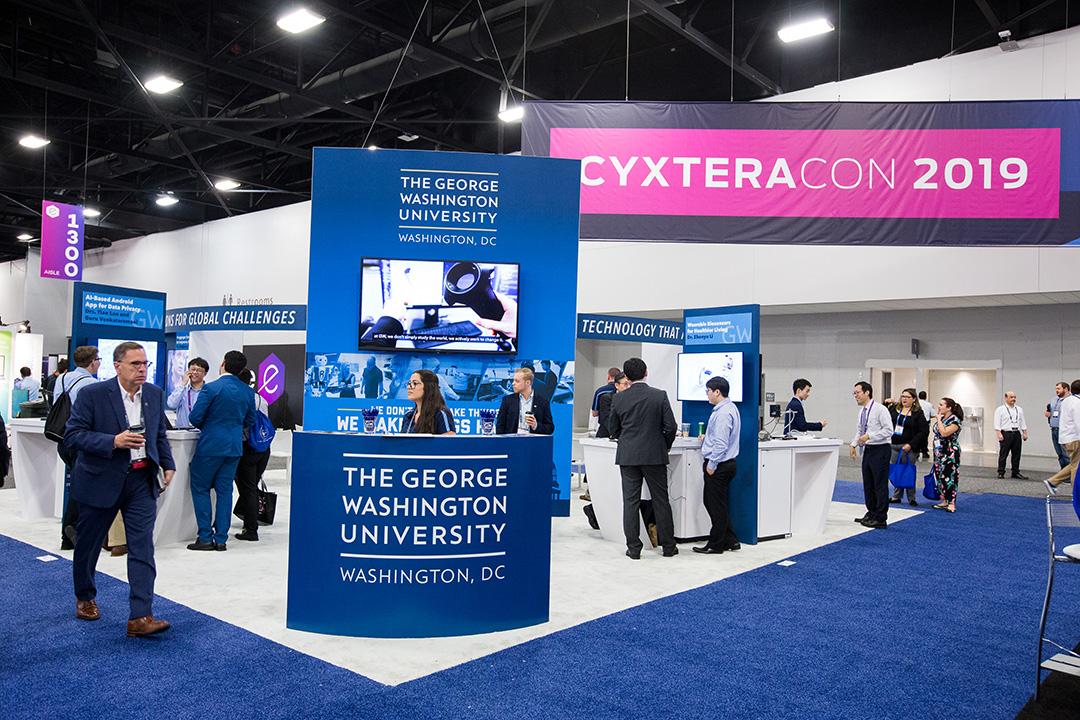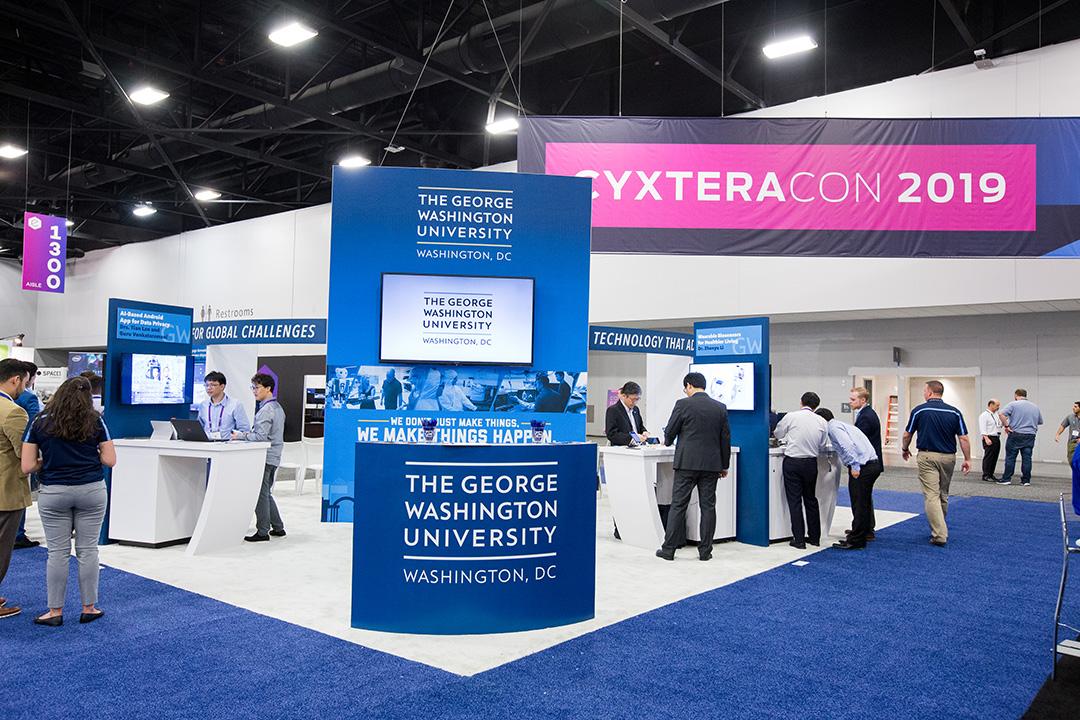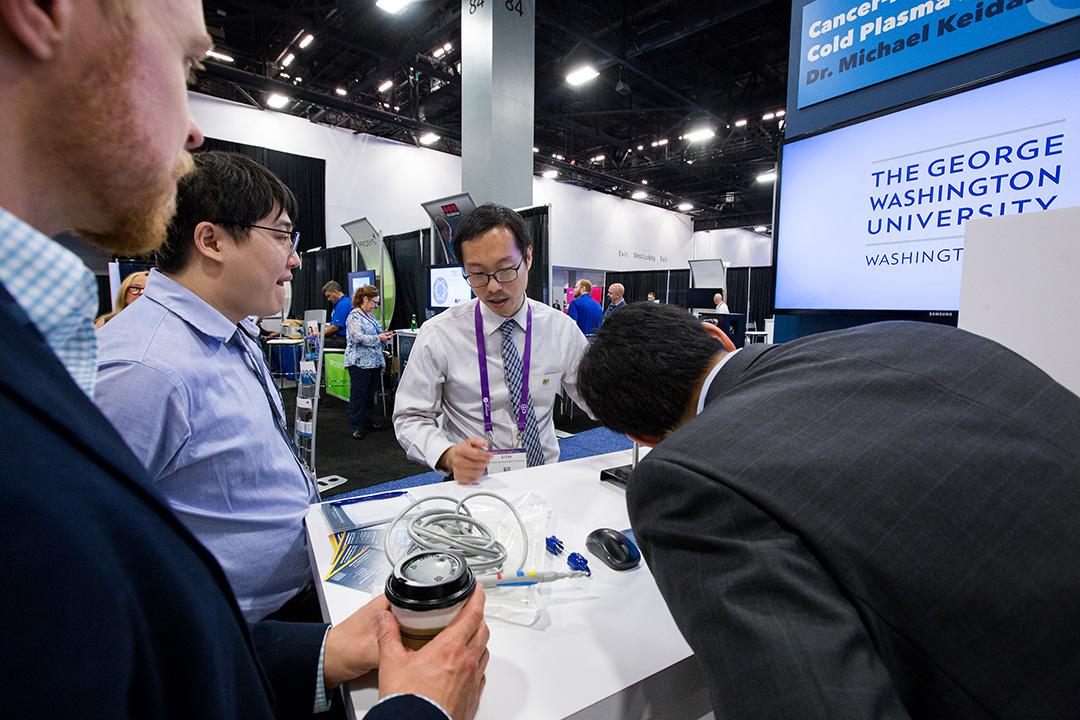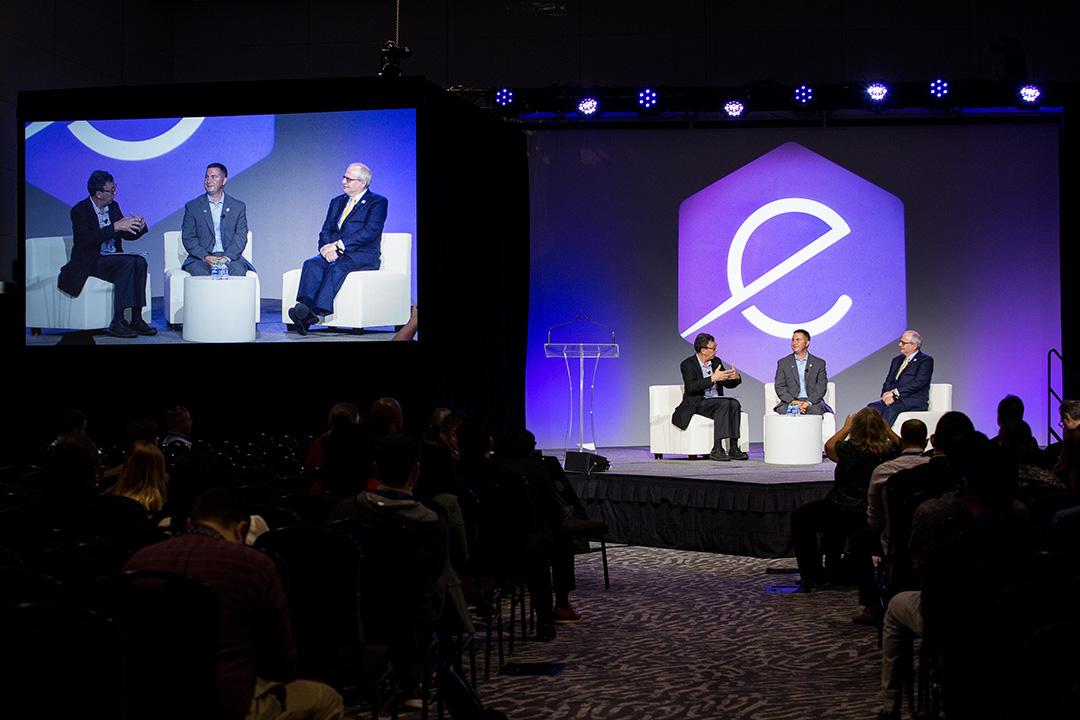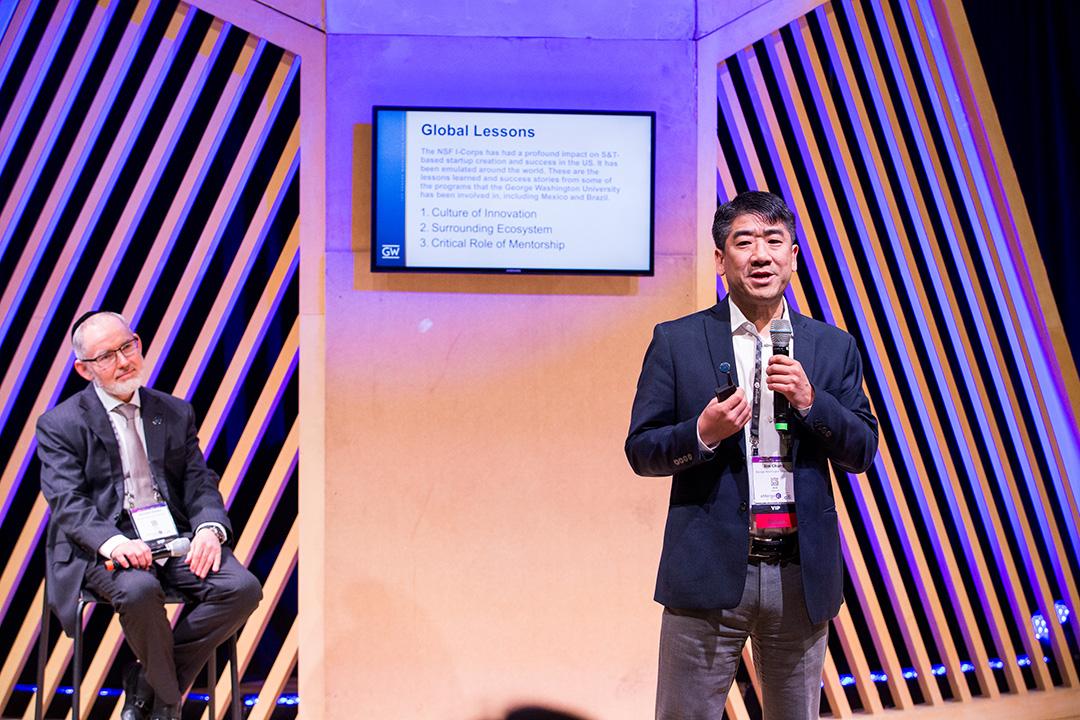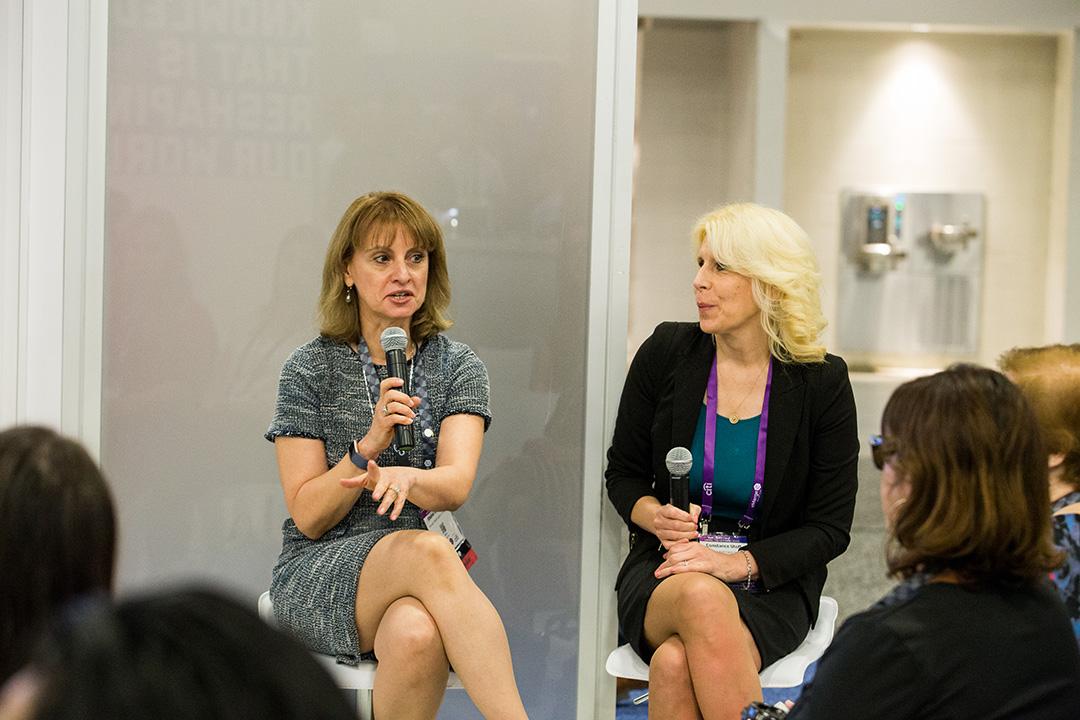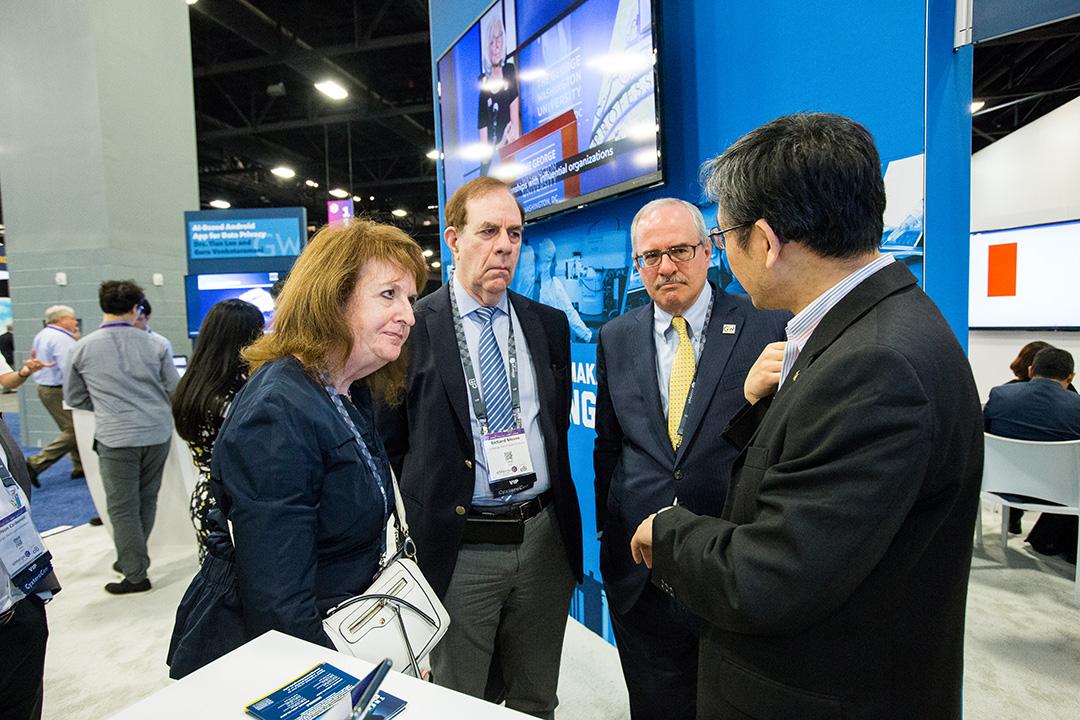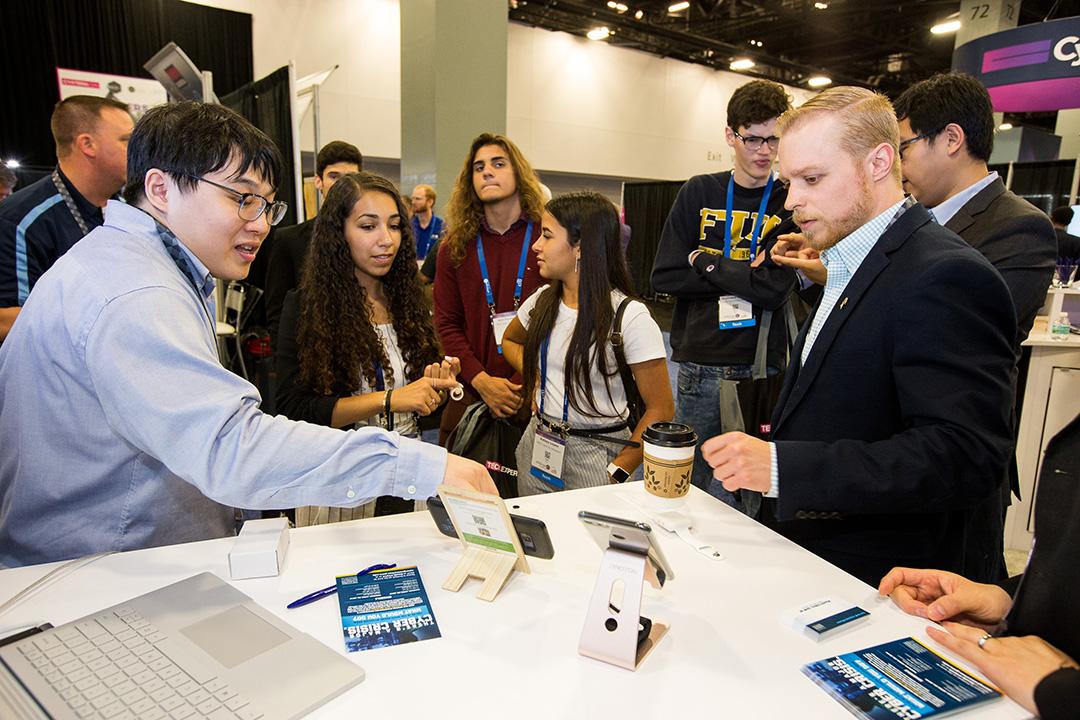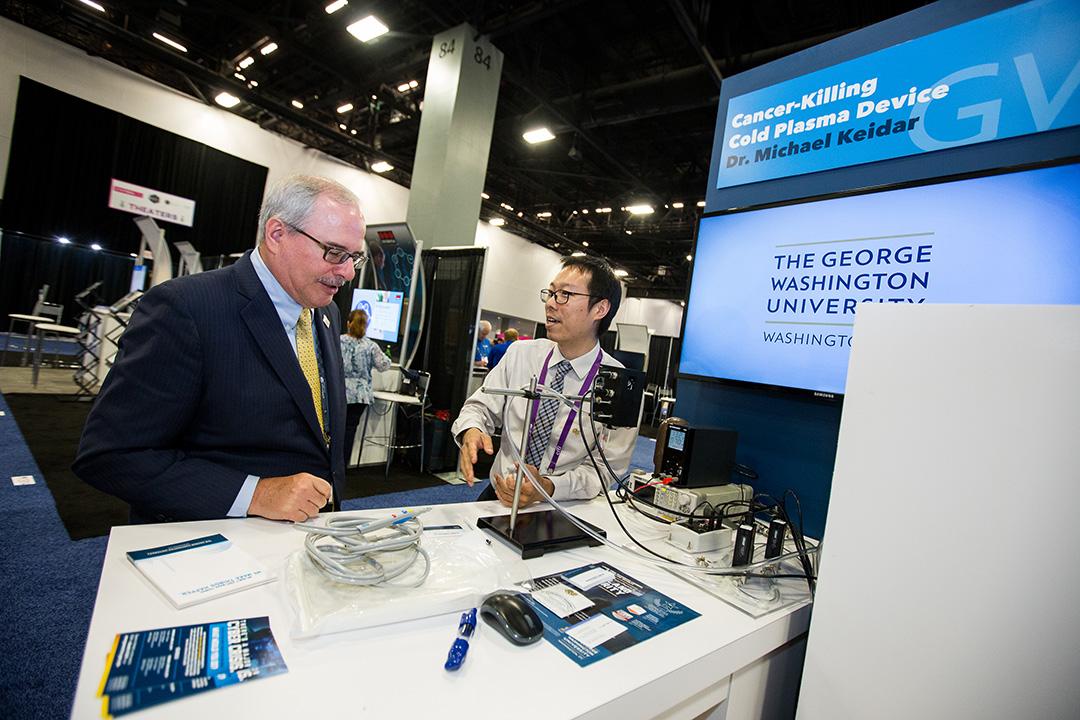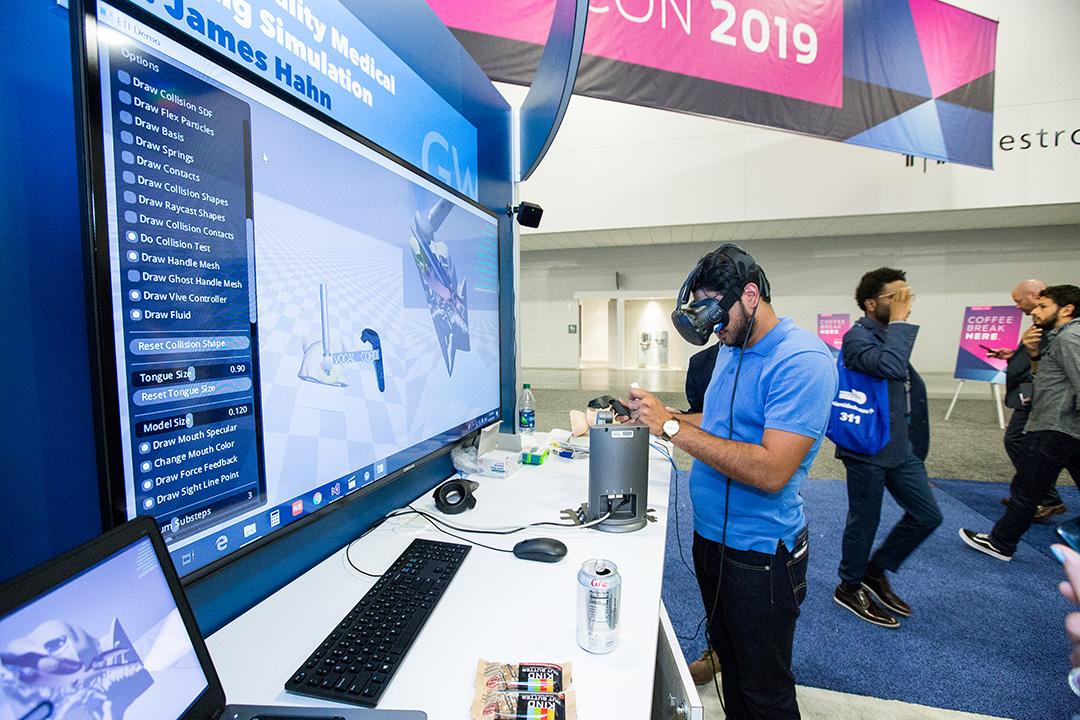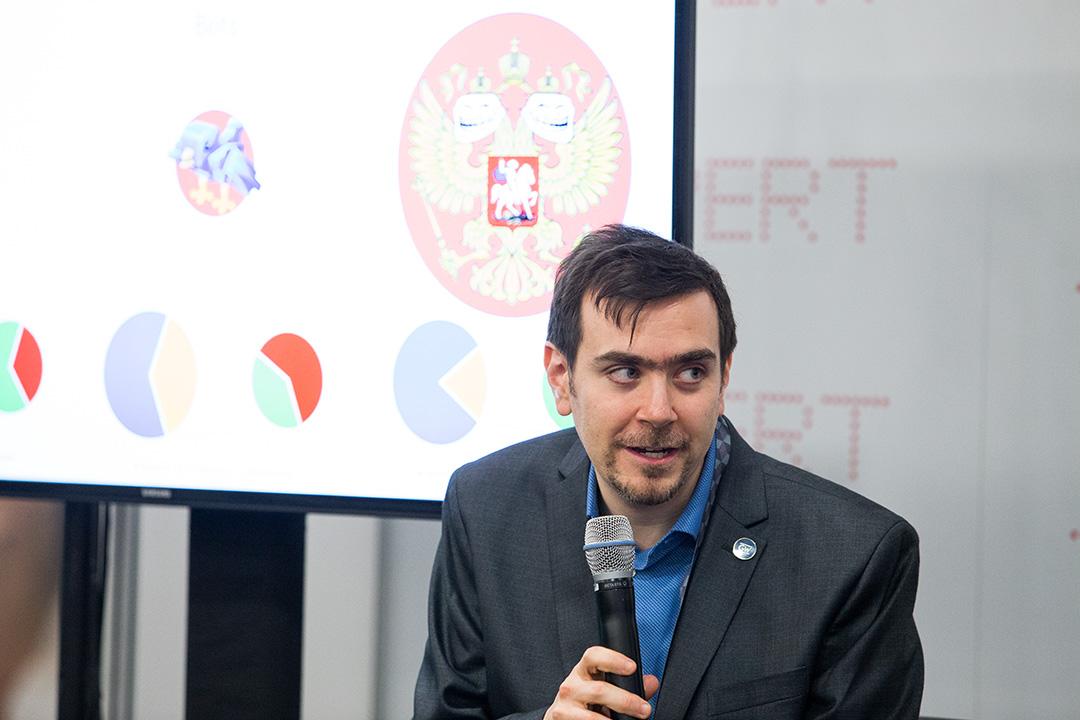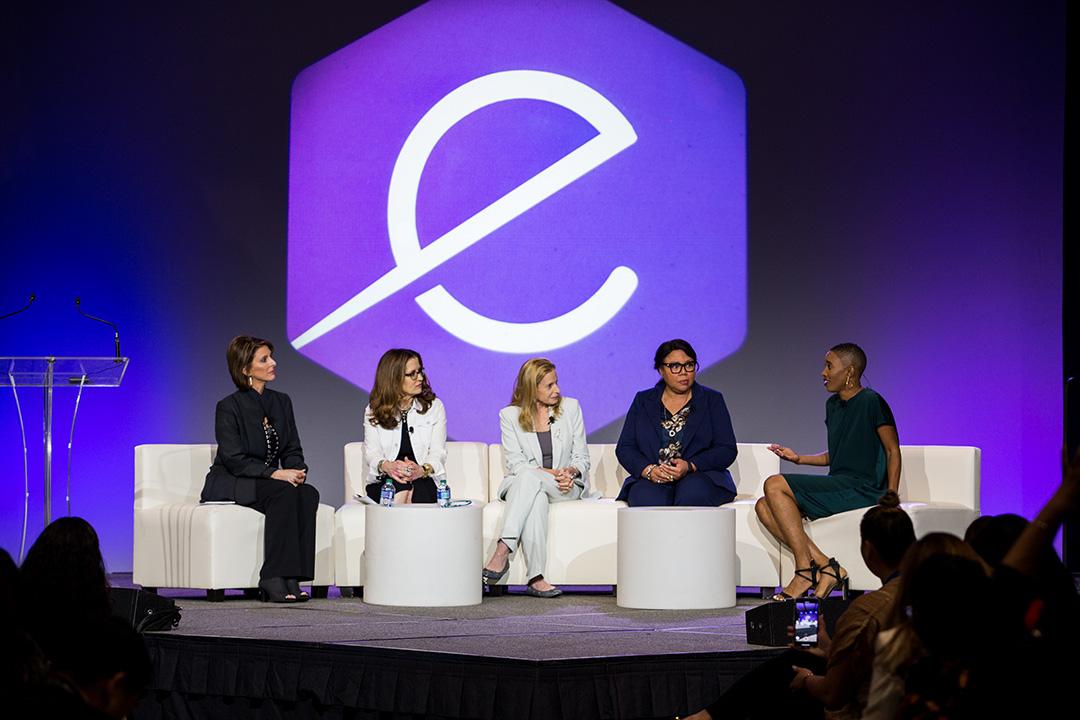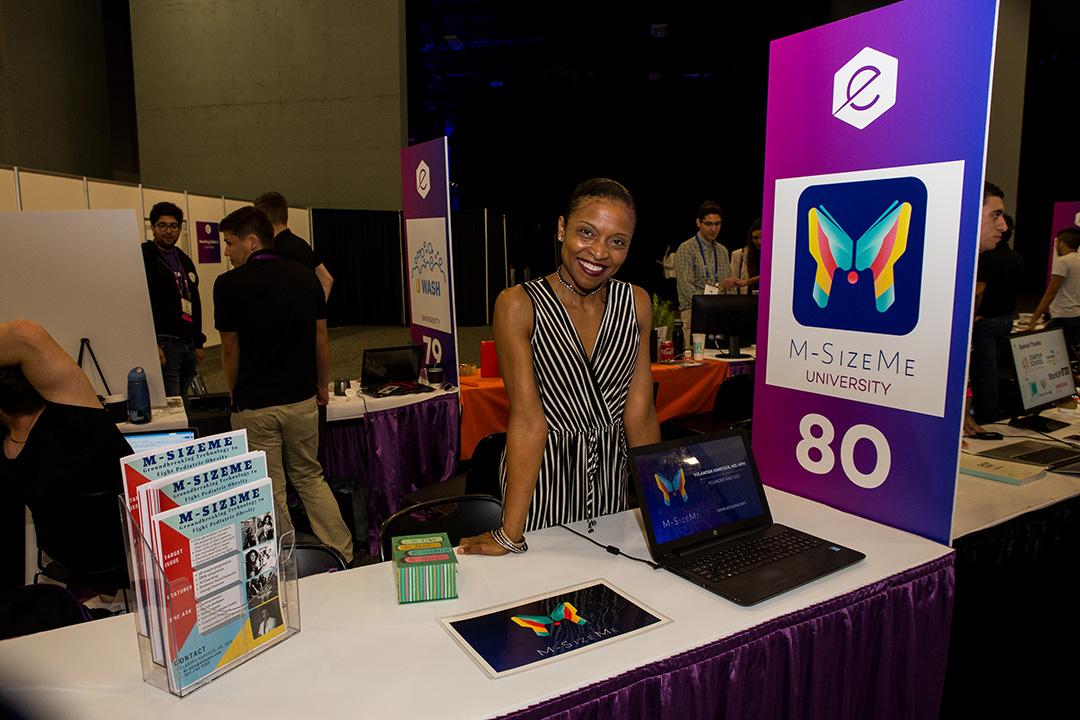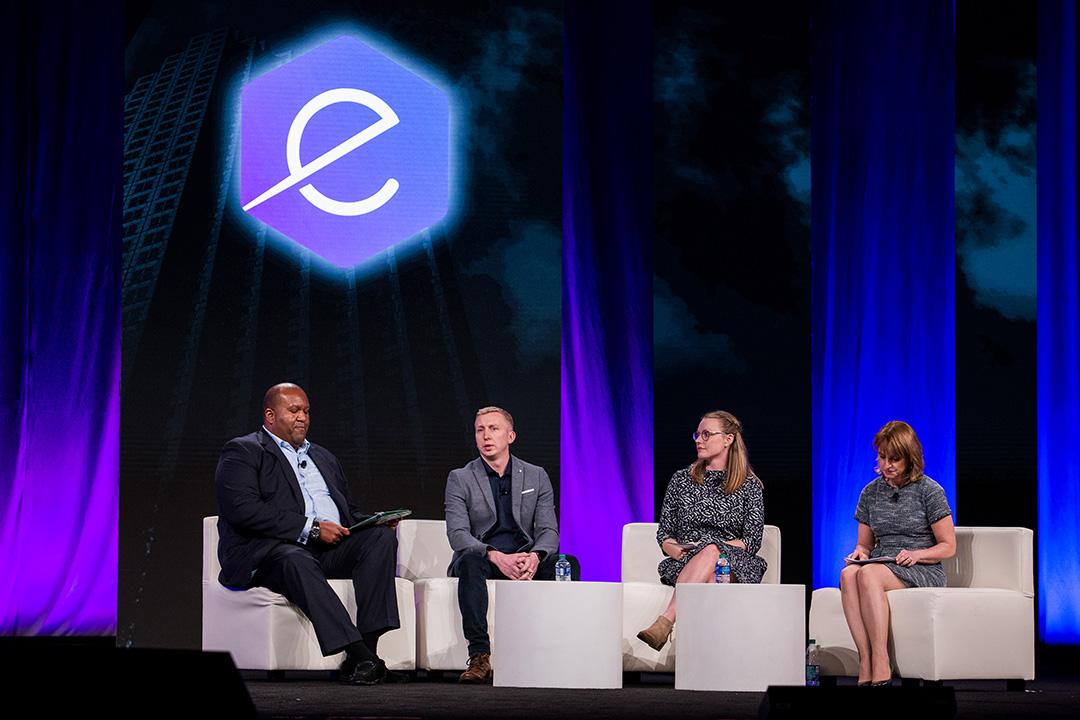By Nancy Dahlberg
George Washington University student entrepreneur Danya Sherman outpitched more than 100 startup competitors from around the world to win the grand prize at the eMerge Americas annual conference in Miami Beach.
It was a proud moment for GW administrators and faculty, who were among more than 2,000 people in the audience for the announcement, cheering on the Elliott School of International Affairs senior who made it through multiple preliminary rounds.
On stage, Ms. Sherman couldn’t contain her enthusiasm either, surely because of the award but also because one the judges was one of her favorite artists—popstar Pitbull.
“It was an amazing feeling just being able to pitch in front of such seasoned investors but as well to compete against such fantastic companies,” said Ms. Sherman, who is majoring in international affairs.
And Pitbull? “I’m a huge fan,” she said, “I don’t know if that came across on stage.”
She pitched her company called KnoNap, which has developed a specially-designed napkin that can detect specific “date-rape” drug presence in drinks. “As a university student and also representing my university, bringing home that win to Washington, D.C., was one of the most humbling experiences.”
Ms. Sherman receives $100,000 in Google Cloud credits and expenses for “the ultimate San Francisco experience” to meet with tech accelerator Y Combinator’s CEO Michael Seibel.
The big contest win capped off two busy days for GW at the eMerge Americas conference that attracted about 15,000 people. GW was not only a conference sponsor, but in addition, GW President Thomas LeBlanc and GW faculty took part in keynote talks and panel discussions throughout the conference. The university’s large exhibit area featured interactive displays on a wide variety of GW faculty research.
Dr. LeBlanc talked about the university’s technological research in a panel discussion with U.S. Rep. Darren Soto (D-Fla.), J.D. ’04, about ways that higher education and government can promote and support technology and innovation.
Located in the heart of Washington, D.C., the university must connect its research to the community and the world, Dr. LeBlanc said.
“There is a whole new world that is being imagined,” he said, and government and universities need to be part of the conversations. “What we are trying to do is bring those worlds together.
“My view is every single student needs to have access to the skillset for the quantitative analysis of data using technology,” he said. “Whatever they are studying, they have to have that, and we want to be a university that provides that.”
Jim Chung, GW’s associate vice president for Research, Innovation and Entrepreneurship, presented on the leading role GW has played in training researchers how to bring their technologies to market through the innovation programs at GW and with its partners nationally and internationally, including the National Science Foundation’s I-Corps program.
By giving researchers tools and a road map for successful commercialization, I-Corps at GW has trained more than 5,000 researchers in the mid-Atlantic region and has taken the program to 14 countries, including South Korea, Brazil and Mexico, he said.
“We are not doing business plans, we are teaching entrepreneurs to create business models,” Mr. Chung said. “We are focusing on customer development rather than product development. We are teaching scientists and engineers to use their own process of the scientific method for launching their own startups.”
And yes, that includes rocket science and brain surgery.
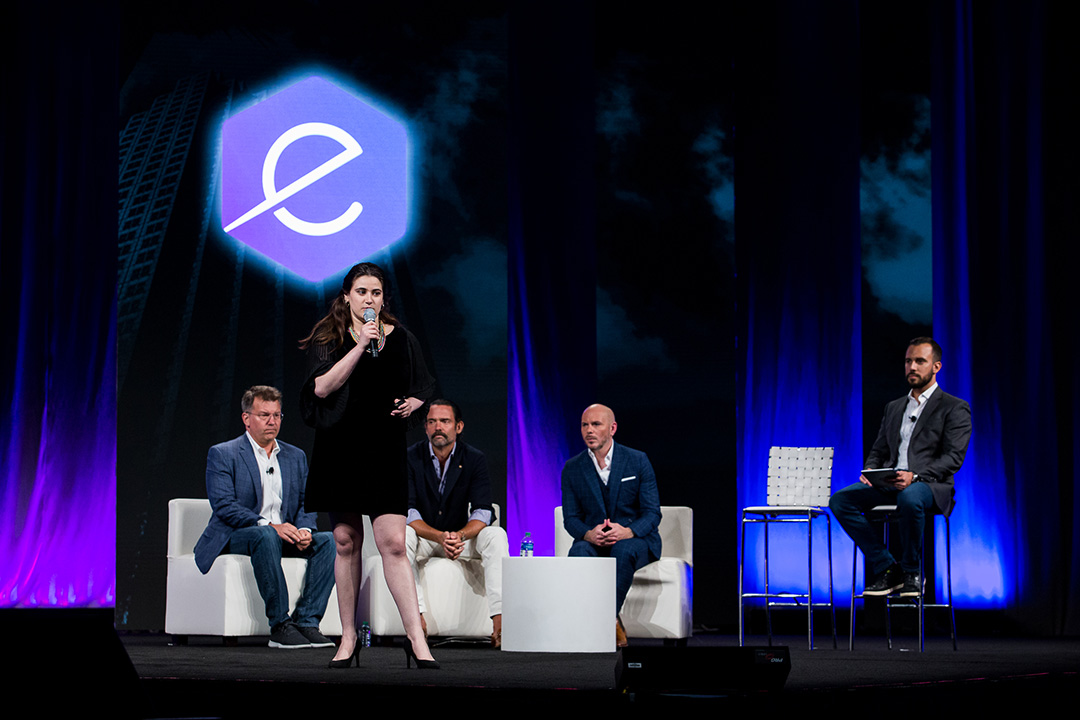
Danya Sherman pitching her company, KnoNap, at eMerge Americas startup competition. She won top prize.
Michael Keidar, the A. James Clark Professor of Engineering at the School of Engineering and Applied Science, joined Mr. Chung on stage to discuss his experience in the iCorps program developing solutions based on his research in aerospace, and most recently, bioengineering.
His ground-breaking research into the use of cold plasma for cancer surgery was just one of the displays at GW’s exhibit area, where conference attendees could also attempt to save an infant in an operating room with virtual reality training technology or check their blood alcohol level with a wearable device that monitors levels through sweat.
Booth attendees also could see how cognitive neuroscience is being used to identify the best Transportation Security Administration agents, how artificial intelligence can help Android device users monitor and control leakage of their private data and learn how a solar water purification system could affordably and sustainably bring clean water to emerging economies.
One of the most popular exhibits was a simulation that put conference goers in the White House situation room during a staged major cybersecurity attack so they could see how they would respond.
An interdisciplinary panel of GW faculty—Steven Livingston, Maria Restrepo, David Broniatowski and Frank Sesno—dove into a timely and important discussion on the promise and perils of technology.
Dr. Broniatowski’s research found that Russian trolls and bots were 22 times more likely to amplify and weaponize the vaccine debate. Even pro vaccination messages were designed to get people angry, he said. “By creating the impression there is a debate to be had, that creates hesitancy, that creates delay, and that means people are not getting vaccinated, and as a result frankly our children are exposed,” he said.
Dr. Restrepo found mounting evidence of how digital fake news impacted Colombia’s peace building process. She studied the online behaviors of 220 Facebook communities in the runup to Colombia’s peace referendum in 2016, which was defeated.
Yet, the very same technologies that are being used for disinformation campaigns can also be used for positive outcomes. Today, 4 billion people have access to the internet – “the data and all of those phones have the opportunities to do positive things,” said Dr. Livingston, who cited organizations from the New York Times to Amnesty International that are tapping into the data to investigate or document issues such as war crimes, human rights abuses, deforestation or receding glaciers. The International Criminal Court at The Hague has indicted war criminals based on this data.
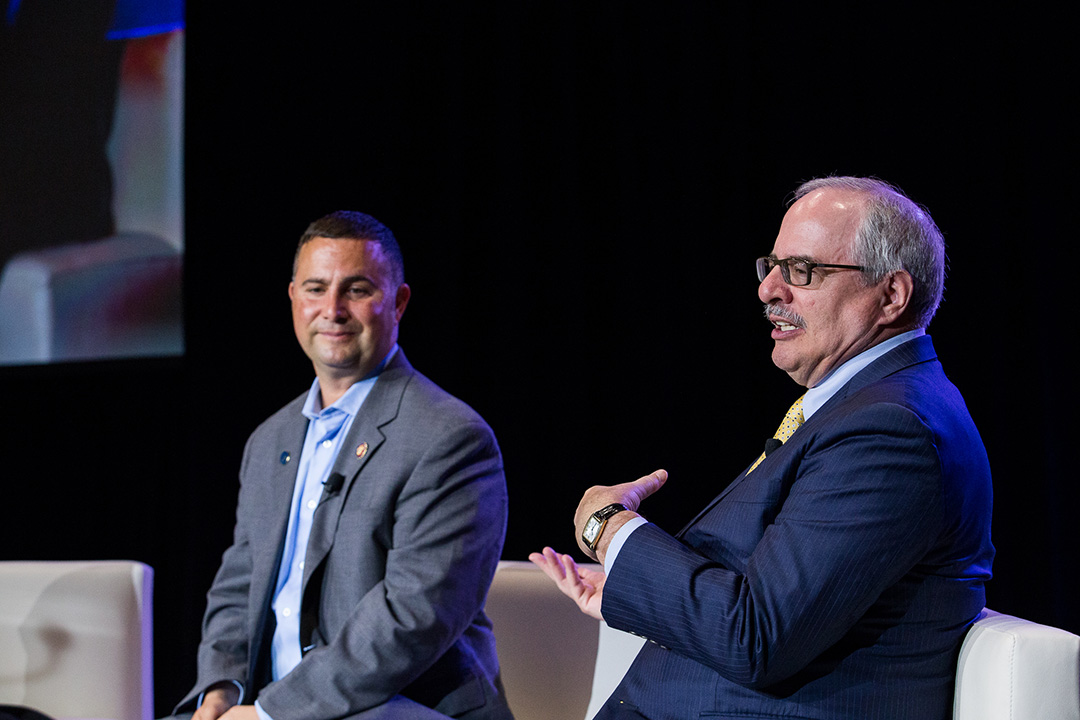
U.S. Rep. Darren Soto (D-Fla.), J.D. ’04 (l), and Dr. LeBlanc, talked about ways that higher education and government can promote and support technology and innovation duirng a panel at the eMerge Americas conference.
On a panel about data privacy, Elaine Lammert, program director of GW’s master’s degree program for homeland security and cybersecurity strategy and information management and former special agent of the FBI, discussed ways that government and the private sector would need to work together to protect consumers’ data.
“We need to start working together … and develop those lines of communications and processes that can be implemented at a time of crisis. We are seeing some of that with social media companies, and the FBI created an office just for that. Most of what we are trying to protect in our country is in the hands of the private sector,” she said.
Meanwhile, Kathy Korman Frey, who teaches Women’s Entrepreneurial Leadership and leads GW’s Hot Mommas Project, led a panel of women leaders who are finding ways to help more women entrepreneurs snag venture capital, where the numbers to date are dismal. Just 2 percent of venture capital goes to women.



